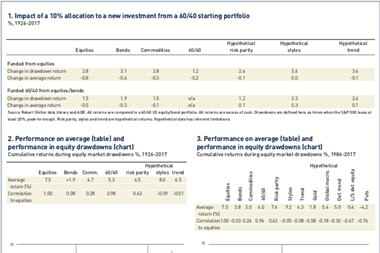Tail risks for pension funds, such as the COVID-19 crisis, are much more likely to occur than schemes’ current risk assumptions indicate, a new risk model has suggested.
The model – developed by Wilse Graveland and Frank van der Ploeg of Kempen, and Casper de Vries, professor of monetary economics at Rotterdam’s Erasmus University – showed that extreme events happen five to 10 times more frequently than thought.
The developers said their new model helps pension fund boards avoid sudden and fundamental investment decisions by providing insight into financial markets and coverage ratios.
Van der Ploeg, fiduciary manager at Kempen, said COVID-19 turns out to be a tail risk that has completely surprised financial markets, as it was the case with the financial crisis in 2008.
“The US travel for Europeans hit markets and interest rates for a second time. Pension funds’ models for asset-liability management studies and feasibility checks underestimate the risk of such a double whammy,” he pointed out.
“Current models usually estimate the chance of a 10% equity decline within a month at less than 1%. They consider the possibility of another 5% hit at 0.01%, while the chance of an additional drop of 20% is estimated at nil,” argued Van der Ploeg.
Graveland, Kempen’s head of institutional business, said the chance of extreme scenarios in many risk models had even declined in the past years.
He attributed this development to limited volatility, as equity markets and interest rates predominantly rose since 2008.
The trio focused on extreme events, including the credit crunch, the internet bubble burst of 2001 and Black Monday in the late eighties.
However, they didn’t include virus outbreaks such as SARS in 2003, arguing that their market impact was usually small.
“We looked at patterns that have been overlooked in the current risk models, and the most important conclusion was that markets taking a second hit quickly after a significant market decline happened much more than assumed,” Van der Ploeg said.
“Markets taking a second hit quickly after a significant market decline happened much more than assumed”
Frank van der Ploeg, fiduciary manager at Kempen
According to Graveland, extreme scenarios tended to be largely ignored by pension fund boards, “as they hardly occurred”.
In his opinion, trustees should decide their policy in advance in case their funding is hit several times within a short period.
If a pension fund decides to stick to its policy and to take its loss, then this must be properly communicated to their participants, Graveland said.
On the other hand, trustees could also agree that they will take measures in case of a looming stress scenario, such as the fall of interest rates, which started in early 2019, he said.
Graveland said pension funds, as long-term investors, were not entirely immune to extreme scenarios.
“As a big drop occurs near year-end and large rights cuts loom, trustees need to provide clarity to their participants. As a consequence, a 50-year investment horizon changes into 51-year horizons.” In its tail risk model, Kempen applied a data set spanning a couple of decades.
In Graveland’s opinion, the model is also applicable to assess the impact of climate risk on pension funds’ coverage ratios. “If, for example, the EU decided to significantly raise the price of carbon emissions, markets could break adrift because of uncertainty about which companies would be hit.”










No comments yet